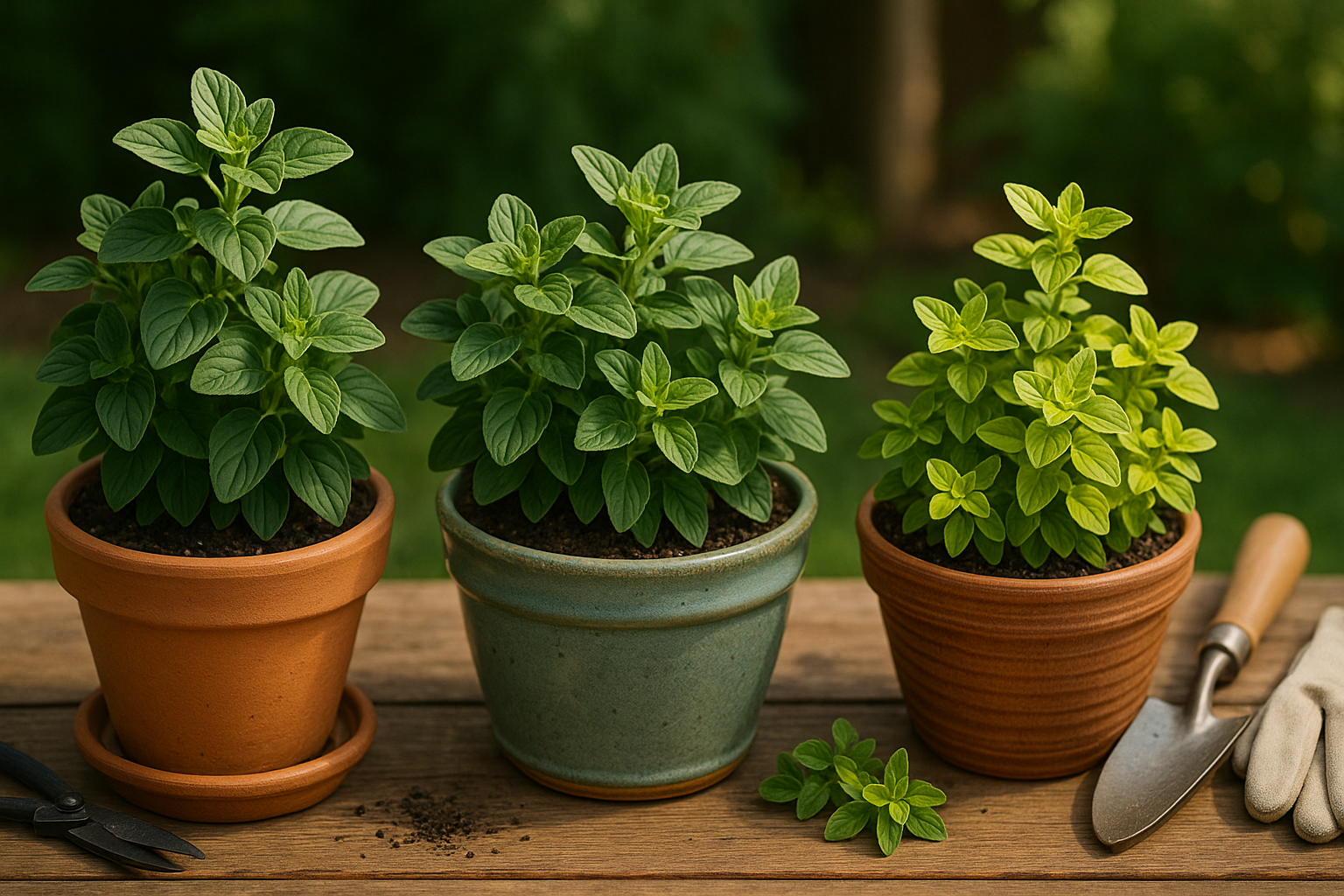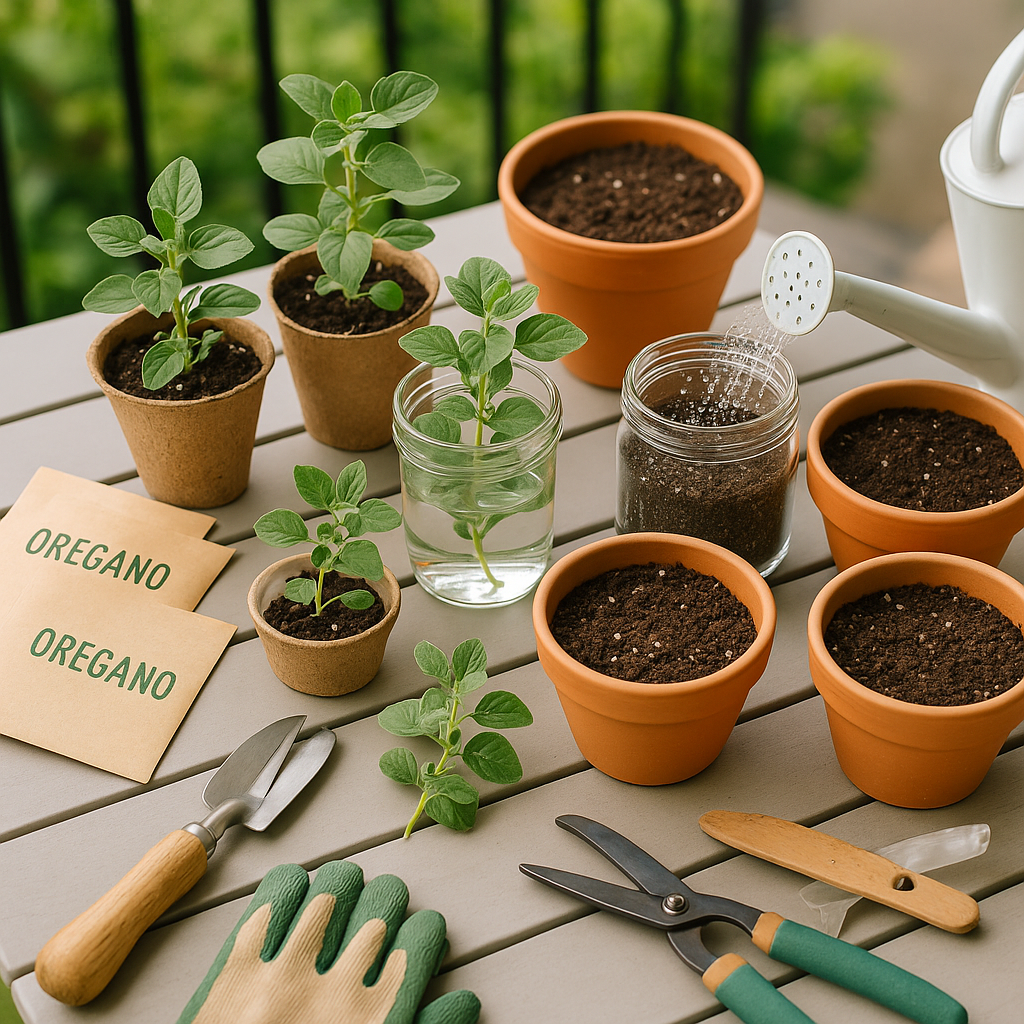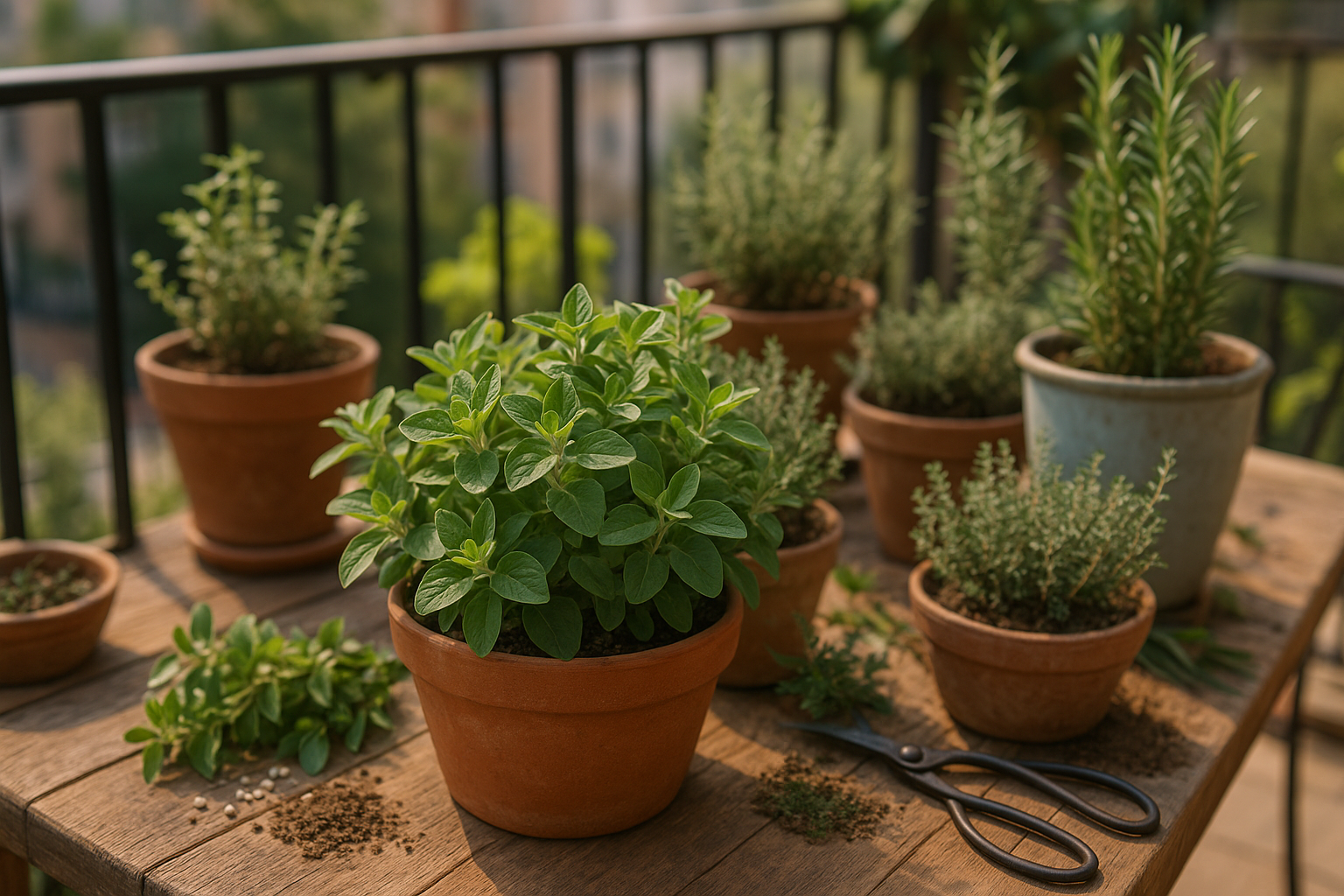Introduction to Growing Oregano on a Balcony or Patio
If you’ve been wondering how to make the most of your limited outdoor space, adding oregano to your balcony garden could be exactly what you need. Oregano is perfect for balcony and patio gardening because of its compact size, resilience to fluctuating weather, and endless culinary uses—from homemade pizza to fresh salad dressings.
Even if you live in the heart of the city or only have a small patio, having fresh herbs like oregano right at your fingertips brings flavor, fragrance, and a pop of greenery to your everyday life. The benefits of growing your own oregano are hard to overlook: you’ll have pesticide-free leaves on hand, save money at the grocery store, and enjoy the satisfaction of nurturing something from seedling to tabletop.
Plus, oregano thrives in containers, making it one of the easiest herbs for beginners and seasoned gardeners alike. In this post, we’ll walk you through everything you need to grow oregano in containers—choosing the right pot, finding a sunny spot, proper watering, and simple care tips to keep your plant healthy all season. With just a little effort, even the smallest balcony can become a thriving mini-herb garden.
Choosing the Right Oregano Variety and Containers

When it comes to growing oregano in containers, selecting the right variety makes all the difference in both flavor and ease of care. Greek oregano is a top pick for its bold, peppery taste and robust growth—perfect for Mediterranean dishes or hearty sauces. Italian oregano, often a milder hybrid of oregano and marjoram, offers a subtler, sweeter flavor that pairs well with pizzas and pastas. For a decorative twist, Golden oregano stands out not just for its beautiful yellow-green leaves but also for its gentle, less intense taste, making it a lovely option for both culinary and ornamental purposes.
Regardless of the type you choose, your container should have drainage holes to prevent soggy roots, which can quickly lead to root rot. Aim for a pot that’s at least 8-12 inches in diameter and equally deep to give roots ample room to spread—this size works well on balconies and patios without being cumbersome.
When it comes to materials, terracotta and ceramic pots offer excellent breathability and stability, helping to prevent overwatering, although they may dry out faster and need more frequent checks. Plastic pots are lighter and retain moisture longer, which is handy if you live in a hot, dry climate, but make sure they have solid drainage holes and aren’t too flimsy.
For best results, choose a high-quality potting mix formulated for herbs, and place your oregano in a sunny spot where it can soak up at least six hours of light daily. Consider grouping oregano with other Mediterranean herbs like thyme or rosemary for a mini herb garden that thrives in similar conditions and brings both flavor and beauty to your outdoor space.
Planting Oregano

When it comes to planting oregano, you have three main options: starting from seeds, nursery-grown seedlings, or cuttings taken from an established plant. Each method has its own benefits and challenges, especially for beginners.
Growing oregano from seed is budget-friendly and gives you the joy of watching your plant develop from the very beginning, but it takes patience. Oregano seeds are tiny, slow to germinate, and the seedlings can be delicate. For an easier start, buying nursery seedlings gives you a head start with sturdy, healthy plants—perfect for those eager to enjoy fresh oregano sooner. Cuttings offer the fastest and most reliable results, letting you clone a proven plant and skip the unpredictable seedling stage altogether. Just be sure you have access to a healthy mother plant.
To grow oregano from seeds, fill a small pot with seed-starting mix, moisten the surface, and scatter seeds thinly on top. Gently press them into the soil, as they need light to germinate, then mist with water. Keep the pot in a sunny spot indoors or on a warm balcony, and maintain moisture until sprouts appear, usually in 7–14 days. Thin seedlings so each has about 6 inches of space.
If transplanting seedlings or cuttings, choose a 6- to 8-inch pot with drainage, fill it with high-quality potting soil, and make a small hole slightly deeper than the root ball or cutting’s stem. Set the seedling or cutting in, firm the soil gently, and water well.
For best results on balconies and patios, plant after all danger of frost has passed, and space each plant 8–10 inches apart if growing several in a larger planter. Place your pots where oregano will get at least 6 hours of sun daily, and remember to let the soil dry slightly between waterings for healthy, aromatic growth.
Essential Care for Thriving Oregano
Oregano thrives best in full sun, so place your pots or garden beds where the plant can soak up at least six hours of direct sunlight each day—sunny balconies, patios, or south-facing windowsills are perfect spots. This hardy herb tolerates a range of temperatures, but for lush growth between spring and fall, aim for daytime highs between 60°F and 80°F. Move containers indoors if frost threatens, as oregano is only semi-hardy.
When it comes to watering, avoid daily routines; instead, water deeply but infrequently to encourage a strong root system. Let the top inch of soil dry out before watering again — overwatering is a common mistake that can rot oregano’s roots.
For soil, choose a well-draining, moderately fertile mix: combine standard potting soil with a handful of coarse sand or perlite to prevent sogginess. Fertilize sparingly; a diluted, all-purpose liquid feed every six weeks during the growing season is enough. Too much fertilizer can strip oregano of its intense flavor.
Container maintenance is crucial for perennial health: repot your oregano every two years with fresh soil to combat compaction and nutrient depletion. Select pots with good drainage holes, and avoid crowding the roots. In cold climates, overwinter containers indoors on a sunny windowsill or insulate outdoor pots with burlap or mulch.
Regularly trim stems to encourage bushy growth and prevent legginess. With the right placement, attentive watering, smart soil choices, and a watchful eye in winter, your oregano will reward you with robust greenery and aromatic leaves year after year.
Pruning, Harvesting, and Using Fresh Oregano
Pruning oregano is key to keeping your plant healthy and productive—don’t hesitate to give it a regular trim. The best time to prune is once the plant reaches about four inches tall and has developed several sets of leaves. To encourage bushier growth, use clean scissors or garden shears to snip stems just above a pair of leaves, leaving a few healthy leaves on each stem so the plant can recover quickly.
Regularly pinch off any flower buds you see; allowing oregano to flower can cause the leaves to lose their robust flavor and signals the plant to slow down leaf production.
Harvesting Options
You have two main options for harvesting oregano:
- Cutting entire stems: This method is fast and encourages new growth, especially if you make your cuts above a leaf node.
- Picking individual leaves: Works well for smaller, immediate needs but can be time-consuming and doesn’t give the same growth boost as cutting stems.
Harvest oregano whenever you need it, but for peak flavor, cut stems in the morning after the dew has dried and before the heat sets in—ideally just as flower buds are appearing. Avoid removing more than a third of the plant at once to prevent stressing it.
Using Fresh Oregano in the Kitchen
Fresh oregano adds a zesty punch to tomato sauces, grilled vegetables, salads, and marinades—simply strip the leaves from the stem and chop them finely.
Preserving Extra Oregano
- Drying: Dry leaves or whole stems by hanging them upside down in a warm, well-ventilated spot out of direct sunlight. Once crumbly, store them in airtight jars.
- Freezing: Chop oregano, pack it into ice cube trays, add a little water or oil, and freeze for easy use in soups and sautés year-round.
With these tips, you’ll get the most out of every oregano plant—from garden to table and beyond.
Troubleshooting Common Balcony Oregano Problems
Growing oregano on your balcony can be incredibly rewarding, but even this hardy herb can face some challenges. One of the most common issues is pests like aphids and spider mites, which tend to cluster under leaves and suck the plant’s sap, leaving the foliage curled or speckled.
To tackle pests naturally, try spraying your plants with a gentle solution of water and a few drops of mild dish soap. You can also introduce beneficial insects like ladybugs, which feed on aphids.
Diseases can also affect oregano, with root rot and powdery mildew being the usual suspects. Overwatering often causes root rot, so make sure your oregano is planted in well-draining soil and water only when the top inch feels dry. For powdery mildew, improve air circulation between plants and water at the soil level rather than overhead to keep the leaves dry.
Signs of stress in balcony oregano include leggy stems stretching toward light, yellow or brown patches on leaves, and droopy or wilted foliage. If your plant looks leggy, it’s likely searching for more sun — move it to a brighter spot and pinch back the stems to encourage bushier growth. Discoloration can indicate nutrient deficiencies or improper watering. In this case, try using a balanced liquid fertilizer every few weeks and adjust your watering routine as needed.
With a bit of regular care — checking for bugs, ensuring good drainage, and pruning when necessary — you can keep your balcony oregano lush, fragrant, and stress-free. Remember, most problems can be caught early by closely observing your plant’s appearance and habits, so a simple weekly inspection goes a long way in preventing bigger issues.
Final Tips for Balcony Oregano Success
Experimenting with companion planting on your balcony is a fun and rewarding way to boost your oregano’s growth. Try growing oregano alongside basil, chives, or parsley in shared containers—these herbs not only thrive together but also help deter pests and add visual variety to your small garden.
Remember, healthy oregano needs regular trimming, especially before it flowers, to encourage lush, bushy growth. Keep the soil well-drained and allow it to dry slightly between waterings to prevent root rot; oregano doesn’t like “wet feet.”
Don’t be afraid to snip what you need for cooking, as frequent use supports a stronger, more productive plant. Growing oregano at home is convenient, cost-effective, and ensures a fresh supply of aromatic, flavorful leaves for your kitchen. Plus, the uplifting scent and greenery can transform even a tiny balcony into a restful retreat.
If you’re eager to expand your edible garden, consider adding easy-care herbs like mint (but keep it in its own pot to prevent spreading), thyme, or rosemary. For more detailed tips, search for beginner balcony gardening guides or connect with local gardening groups online.
Making small, incremental changes can help you create a thriving herb oasis right outside your door.
